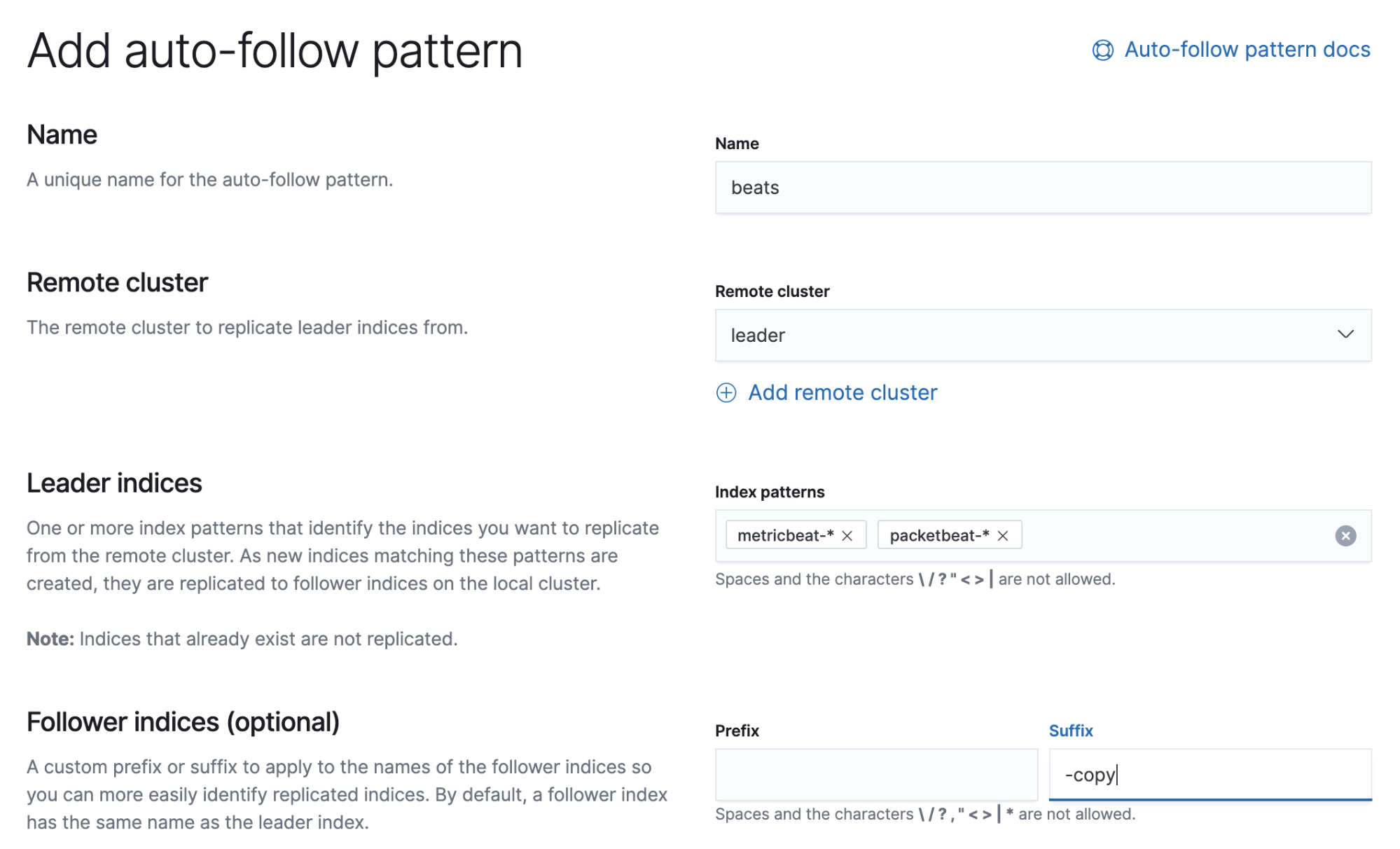- Kibana Guide: other versions:
- What is Kibana?
- What’s new in 7.8
- Get started
- Set up Kibana
- Discover
- Dashboard
- Canvas
- Maps
- Machine learning
- Graph
- Visualize
- Logs
- Metrics
- APM
- Uptime
- SIEM
- Dev Tools
- Stack Monitoring
- Management
- Advanced Settings
- Alerts and Actions
- Beats Central Management
- Cross-Cluster Replication
- Index Lifecycle Policies
- Index Management
- Ingest Node Pipelines
- Index patterns and fields
- License Management
- Numeral Formatting
- Remote Clusters
- Rollup Jobs
- Saved Objects
- Security
- Snapshot and Restore
- Spaces
- Upgrade Assistant
- Watcher
- Ingest Manager
- Reporting
- Alerting and Actions
- REST API
- Kibana plugins
- Accessibility
- Limitations
- Breaking Changes
- Release Notes
- Kibana 7.8.1
- Kibana 7.8.0
- Kibana 7.7.1
- Kibana 7.7.0
- Kibana 7.6.2
- Kibana 7.6.1
- Kibana 7.6.0
- Kibana 7.5.2
- Kibana 7.5.1
- Kibana 7.5.0
- Kibana 7.4.2
- Kibana 7.4.1
- Kibana 7.4.0
- Kibana 7.3.2
- Kibana 7.3.1
- Kibana 7.3.0
- Kibana 7.2.1
- Kibana 7.2.0
- Kibana 7.1.1
- Kibana 7.1.0
- Kibana 7.0.1
- Kibana 7.0.0
- Kibana 7.0.0-rc2
- Kibana 7.0.0-rc1
- Kibana 7.0.0-beta1
- Kibana 7.0.0-alpha2
- Kibana 7.0.0-alpha1
- Developer guide
Cross-Cluster Replication
editCross-Cluster Replication
editUse Cross-Cluster Replication to reproduce indices in remote clusters on a local cluster. Cross-cluster replication is commonly used to provide remote backups for disaster recovery and for geo-proximite copies of data.
To get started, open the menu, then go to Stack Management > Elasticsearch > Cross-Cluster Replication.
![][Cross-cluster replication list view](images/cross-cluster-replication-list-view.png)
Prerequisites
edit- You must have a remote cluster.
- Leader indices must meet these requirements.
- The Elasticsearch version of the local cluster must be the same as or newer than the remote cluster. Refer to this document for more information.
Configure replication
editReplication requires a leader index, the index being replicated, and a follower index, which will contain the leader index’s replicated data. The follower index is passive in that it can read requests and searches, but cannot accept direct writes. Only the leader index is active for direct writes.
You can configure follower indices in two ways:
- Create specific follower indices
- Create follower indices from an auto-follow pattern
Create specific follower indices
editTo replicate data from existing indices, or set up local followers on a case-by-case basis, go to Follower indices. When you create the follower index, you must reference the remote cluster and the leader index that you created in the remote cluster.
![][UI for adding follower indices](images/follower_indices.png)
Create follower indices from an auto-follow pattern
editTo automatically detect and follow new indices when they are created on a remote cluster, go to Auto-follow patterns. Creating an auto-follow pattern is useful when you have time series data, like event logs, on the remote cluster that is created or rolled over on a daily basis.
When creating the pattern, you must reference the remote cluster that you connected to your local cluster. You must also specify a collection of index patterns that match the indices you want to automatically follow.
Once you configure an auto-follow pattern, any time a new index with a name that matches the pattern is created in the remote cluster, a follower index is automatically configured in the local cluster.

Manage replication
editUse the list views in Cross-Cluster Replication to monitor whether the replication is active and pause and resume replication. You can also edit and remove the follower indices and auto-follow patterns.
For an example of cross-cluster replication, refer to Bi-directional replication with Elasticsearch cross-cluster replication.
On this page